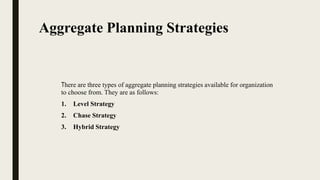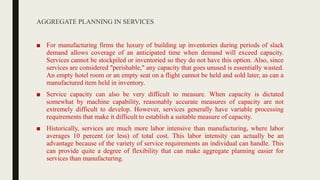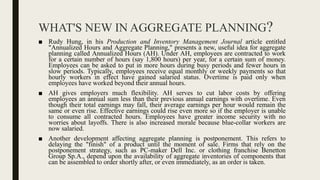Aggregate planning in production management is the process of determining production requirements over a medium-range period, balancing long-term strategies with short-term production needs. It is influenced by factors such as demand forecasts, available resources, financial planning, and organizational policies. Three aggregate planning strategies include level, chase, and hybrid strategies, each with distinct advantages and disadvantages, and the adoption of innovative approaches like annualized hours and postponement can enhance flexibility and efficiency in the planning process.












